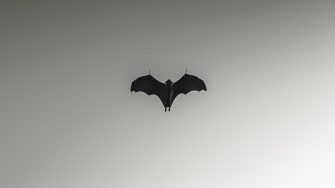
Synopsis
The magnitude and functionality of sensory perception in bats are extraordinary; among mammals, they produce some of the widest frequency and intensity ranges of vocalisations. Bats can hear sounds as low as 20 decibels and produce and interpret sounds of 130 decibels, loud enough to cause damage to human hearing.
Using echolocation, bats can form ‘acoustic images’ of their surroundings by emitting high-frequency sounds and receiving reflections of those sounds returned from surrounding objects. Most of the ~1400 extant bat species use this system to navigate their surroundings in low light/complete darkness.
How bats have modified their skulls to be capable of hearing the echoes that are returned from an echolocation call is not well understood. Features of the inner ear may have evolved unique adaptations in bats compared to other mammals that do not echolocate.
Advances in micro-imaging have enabled the visualisation of the tiny inner ear structures in bats through the high-resolution scanning of hard and soft tissues. Such data can now be reconstructed in 3D to visualise the shape of bones and muscles in the head.
This project is in collaboration with A/Prof. Daisuke Koyabu (City University, Hong Kong).
Aims
This project will investigate the inner ear structures of bats, specifically the cochlear, which is a spiral-shaped cavity in the bony labyrinth, part of the hearing apparatus. The number of spiral turns of the cochlear is known to correlate with hearing limits and this project will assess variation in this feature across a broad range of species. It will uncover evolutionary changes across the two major groups of bats.
The project will use 3D virtual modelling and geometric morphometric (shape-based methods) to visualise and quantify aspects of the cochlear.
Student benefits
You will learn how to:
- undertake state-of-the-art virtual reconstruction and 3D modelling using microCT (hard tissue) and diceCT (soft tissue) data
- apply geometric morphometric methods to quantify shape and use comparative analyses to trace changes in inner ear morphology over the evolutionary history of bats
- write an impactful scientific paper that will be of broad interest to evolutionary biologists.
The core project skills are highly transferrable to a wide array of biomedical and design (CAD/CAM) topics, where such 3D model data and pipelines are routinely used.
Supervisors: Dr Laura Wilson and Professor Suzanne Hand
